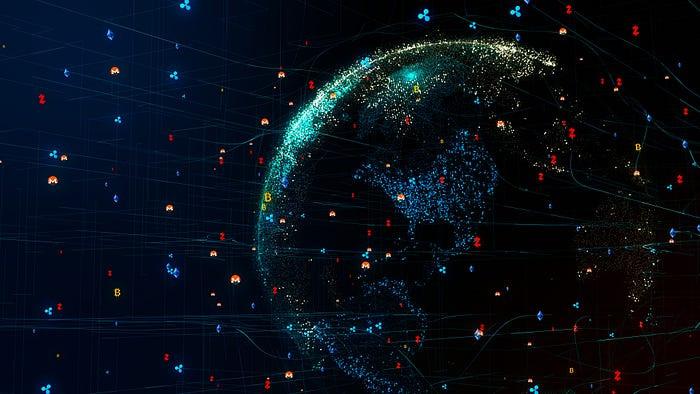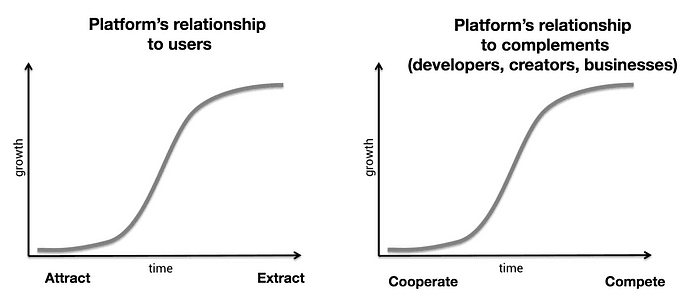Why Decentralization Matters
Curated from: onezero.medium.com
Ideas, facts & insights covering these topics:
6 ideas
·970 reads
11
1
Explore the World's Best Ideas
Join today and uncover 100+ curated journeys from 50+ topics. Unlock access to our mobile app with extensive features.
The first two eras of the internet
From the 1980s to the early 2000s, the first era of the internet saw services built on open protocols managed by the internet community. This caused people or organisations to grow their internet presence, knowing that the rules of the game would remain unchanged.
In the second era of the internet, from the mid-2000s to the present, for-profit companies built software and services that outpaced the capabilities of the open protocols, such as GAFA - Google, Apple, Facebook, Amazon. Users eventually migrated from open services to centralised services.
23
314 reads
Consequences of centralised software and services
While billions of people got access to free technologies, it became more difficult for startups and creators to grow their internet presence.
Centralised platforms could change the rules at any moment, taking away their audiences and profits. Centralisation could also create societal tensions. We see this in debates over fake news, state-sponsored bots, EU privacy laws, algorithmic biases.
22
195 reads
"Web 3": The third era of the internet
A response to centralisation is for governments to impose regulations on large internet companies, assuming the internet is like the phone, radio, and TV networks.
But, hardware-based networks of the past are fundamentally different. They are almost impossible to rearchitect. Software-based networks can be rearchitected.
The internet is a software-based network with a simple core layer connecting billions of computers that can run whatever software they want.
In time, core internet services will be enabled by crypto-economic networks with abilities that will exceed those of centralised services.
23
145 reads
Decentralisation is important
Centralised platforms have several problems:
They follow a predictable life cycle and try to recruit users to make their services more valuable.
Platforms are systems. When platforms move up the adoption S-curve, they grow their power over users and 3rd parties. But when they are at the top of the S-curve, they can really only grow by extracting data from users and competing with complements over audiences and profits.
Over time, the best entrepreneurs, developers and investors will tire of building on top of centralised platforms.
23
122 reads
Cryptonetworks
Cryptonetworks are built on top of the internet that
- use consensus mechanisms such as blockchains.
- use Cryptocurrencies to incentivise consensus participants.
Cryptonetworks use multiple mechanisms to ensure that they stay neutral as they grow.
- the contract between cryptonetworks and their participants is enforced in open source code.
- they are kept in check through mechanisms for "voice" and "exit".
Cryptonetworks ensure network participants band together toward a common goal - the growth of the network and regard for the token.
22
86 reads
Why decentralization wins
Decentralized networks can win the third era of the internet just like they won the first era: because they won the hearts and minds of entrepreneurs and developers.
A centralised competitor might have a better product to start with, but an active community of volunteer contributors, governed by an ehtos, will improve at a much faster rate.
22
108 reads
IDEAS CURATED BY
Josie 's ideas are part of this journey:
Learn more about technologyandthefuture with this collection
The differences between Web 2.0 and Web 3.0
The future of the internet
Understanding the potential of Web 3.0
Related collections
Similar ideas
7 ideas
What is Web3? The Decentralized Internet of the Future Explained
freecodecamp.org
6 ideas
8 ideas
Read & Learn
20x Faster
without
deepstash
with
deepstash
with
deepstash
Personalized microlearning
—
100+ Learning Journeys
—
Access to 200,000+ ideas
—
Access to the mobile app
—
Unlimited idea saving
—
—
Unlimited history
—
—
Unlimited listening to ideas
—
—
Downloading & offline access
—
—
Supercharge your mind with one idea per day
Enter your email and spend 1 minute every day to learn something new.
I agree to receive email updates



